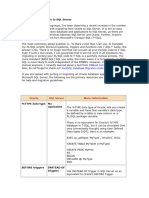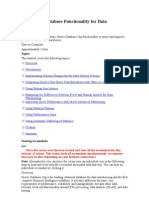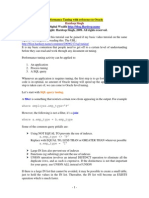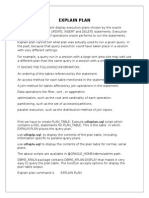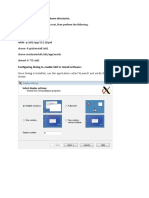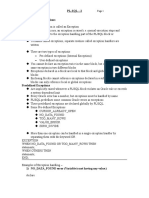0% found this document useful (0 votes)
149 views5 pagesSQLTXPLAIN (SQLT) Tool Overview & Use Cases
SQLTXPLAIN (SQLT) is a free Oracle tool that diagnoses SQL statements performing poorly. It inputs a single SQL statement and outputs diagnostic files including execution plans, statistics, and performance metrics. SQLT helps identify issues by capturing the SQL execution environment. It is commonly used by support and development to troubleshoot performance problems and plan regressions across different Oracle versions and platforms.
Uploaded by
Raghavendra KamurthiCopyright
© © All Rights Reserved
We take content rights seriously. If you suspect this is your content, claim it here.
Available Formats
Download as DOC, PDF, TXT or read online on Scribd
0% found this document useful (0 votes)
149 views5 pagesSQLTXPLAIN (SQLT) Tool Overview & Use Cases
SQLTXPLAIN (SQLT) is a free Oracle tool that diagnoses SQL statements performing poorly. It inputs a single SQL statement and outputs diagnostic files including execution plans, statistics, and performance metrics. SQLT helps identify issues by capturing the SQL execution environment. It is commonly used by support and development to troubleshoot performance problems and plan regressions across different Oracle versions and platforms.
Uploaded by
Raghavendra KamurthiCopyright
© © All Rights Reserved
We take content rights seriously. If you suspect this is your content, claim it here.
Available Formats
Download as DOC, PDF, TXT or read online on Scribd
/ 5










